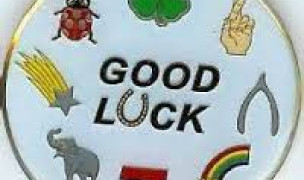 34 Terms
34 TermsHome > Terms > English, UK (UE) > Impulse clock
Impulse clock
First invented in the 19th century by Carl August Steinheil of Munich University as a means of indicating time on a number of clocks simultaneously from a central master clock fitted with electrical contacts which allowed pulses of current to flow in a circuit. The impulse clock does not itself keep time it uses the pulses to drive an escapement in reverse, which turns the hands of the clock through a normal train, used as a reduction train only. Steinheil used a pin-wheel escapement rocked by an electromagnet; Daniell cells from England provided the power. About the same time Alexander Bain independently devised several forms of impulse dial; he called his impulse dials 'companion' clocks or 'affiliated' clocks. Victor Reclus of Paris patented the first impulse dial which was locked at all times by two clicks; earlier impulse dials had the disadvantage of being inaccurate in operation by responding to intermittent pulses, or by the minute hand running on two or more spaces for one impulse only. W. E. Palmer, in 1902, and Frank Hope-Jones, later, improved impulse dials so they became completely reliable. George Bennet Bowell invented the first silent type, using a rotary iron armature moved by an electromagnet and locked by a permanent magnet system, first marketed c. 1906. Modern impulse dials differ only in the style of dial and case; the mechanism is virtually unchanged from the earlier ones.
- Part of Speech: noun
- Synonym(s):
- Blossary:
- Industry/Domain: Chronometry
- Category: Clock
- Company:
- Product:
- Acronym-Abbreviation:
Other Languages:
Member comments
Terms in the News
Featured Terms
Biocide
A chemical that is toxic to microrganisms. Biocides are often used to eliminate bacteria and other single-cell organisms from water.
Contributor
Featured blossaries
Browers Terms By Category
- Hats & caps(21)
- Scarves(8)
- Gloves & mittens(8)
- Hair accessories(6)
Fashion accessories(43) Terms
- Economics(2399)
- International economics(1257)
- International trade(355)
- Forex(77)
- Ecommerce(21)
- Economic standardization(2)
Economy(4111) Terms
- Human evolution(1831)
- Evolution(562)
- General archaeology(328)
- Archaeology tools(11)
- Artifacts(8)
- Dig sites(4)
Archaeology(2749) Terms
- Action toys(4)
- Skill toys(3)
- Animals & stuffed toys(2)
- Educational toys(1)
- Baby toys(1)
Toys and games(11) Terms
- Manufactured fibers(1805)
- Fabric(212)
- Sewing(201)
- Fibers & stitching(53)






